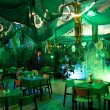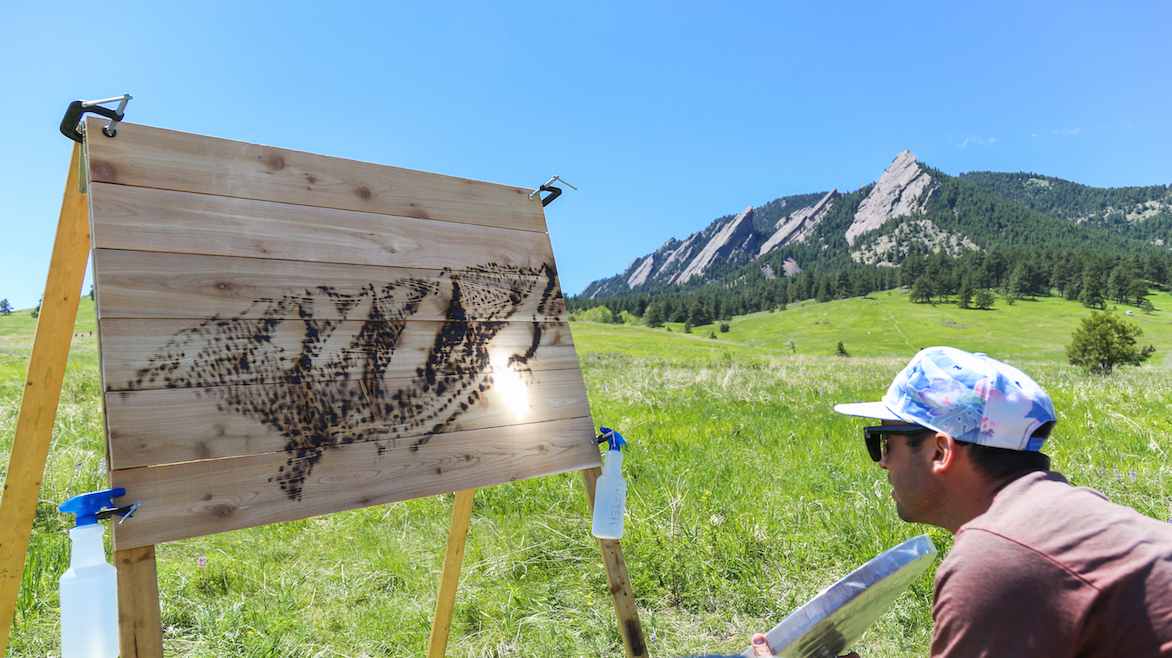Burning intricate images into wood with magnifying lenses and parabolic mirrors might sound a little like sci-fi, but it’s what Colorado artist Michael Papadakis has devoted himself to. The first thing most people do when they witness Papadakis creating his artworks is to double-take. “Wait, how are you doing that?” they ask, confused and impressed at the same time. The answer is more complicated than one might expect. What’s more magical than the tools he uses is the fact that he uses his knowledge of rainbows to produce lesser or greater detail in each of his pieces. Papadakis has coined the term “heliography” for the technique, which is based on ancient mechanisms for tracking sun and weather throughout the day.
Just like the art form itself, Papadakis is unconventional. When he talks about heliography it’s obvious how much time he has spent researching and experimenting with it. With nearly every piece he creates, he films it with a GoPro to make time-lapse videos of the conception and creation. His professional commission-based company, Sunscribes Solar Printing has created signs for some major restaurants, TEDxMileHigh and sentimental pieces as gifts. But where Papadakis thrives is in his personal art where he primarily conveys political and social messages — like when he created a refugee-based message in Downtown Denver this spring.
303 Magazine joined him for an exclusive solar painting session outside Boulder’s Chautauqua Park to witness his process and talk about his focus on safety, fixing his scoliosis and his hopes for sustainable advertising. The session started at 9 a.m. and lasted roughly three hours, as clouds began gathering on top of the foothills.
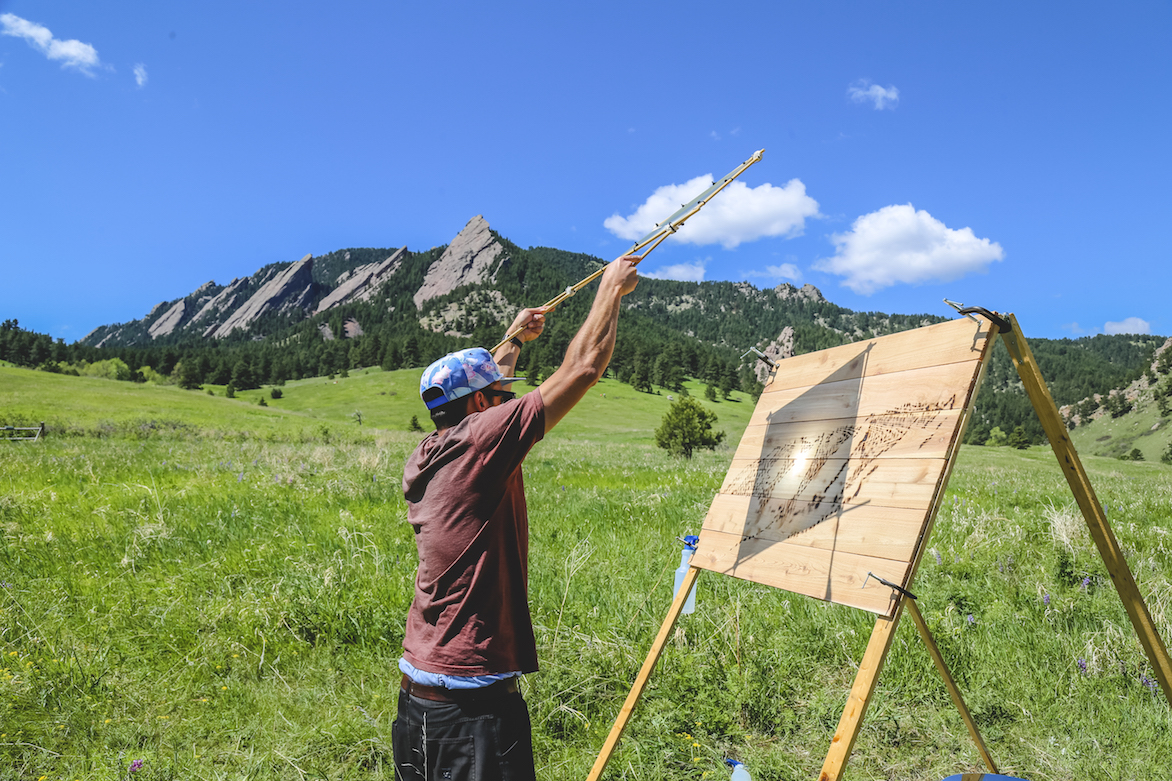
303: How and why did you start doing this form of art?
Michael Papadakis: In 2012 I was in China and discovered a magnifying glass and something sparked my interest with it. I had been drawing and painting during my travels leading up to that moment, but those supplies were getting heavy. When I held that magnifying glass, I just knew I could draw with it. I went outside and tried it and I had this sense of nostalgia, like I had done it in a past life. That was it. I got rid of all of my other drawing supplies and traveled for another year after that. My 14-month journey from Korea to France forced me to make an oath to myself that I would create for peace. I’m just telling a story, and the sun is recording it. The light that the whole world watches come up and go down, every single day.
303: Describe the lenses and mirrors and how they allow you to burn images with such great detail.
MP: I started with a traditional magnifying glass, a dollar store purchase and also a compact make-up mirror. Then I made my own trash-can lid mirror, which I saw online as solar-cooking DIY ideas. I have a vacuum in the trash can lid, a little hole I blow into or suck out of and plug and that creates a greater or lesser parabolic shape in the mirror. Understanding the process of creating different focal points allows me to get crazy detail because I can work within a certain color spectrum of light as well. With a magnifying glass or lens, there is a hourglass shape of sunlight that appears after passing through the material. The top half of that hourglass is comprised of red, orange and yellow whereas the bottom half is green, blue and purple. The “cooler” colors are actually the hottest and the most serious to work with.
“These paintings, which can take anywhere from one to 30 hours, I feel like I ran a marathon”
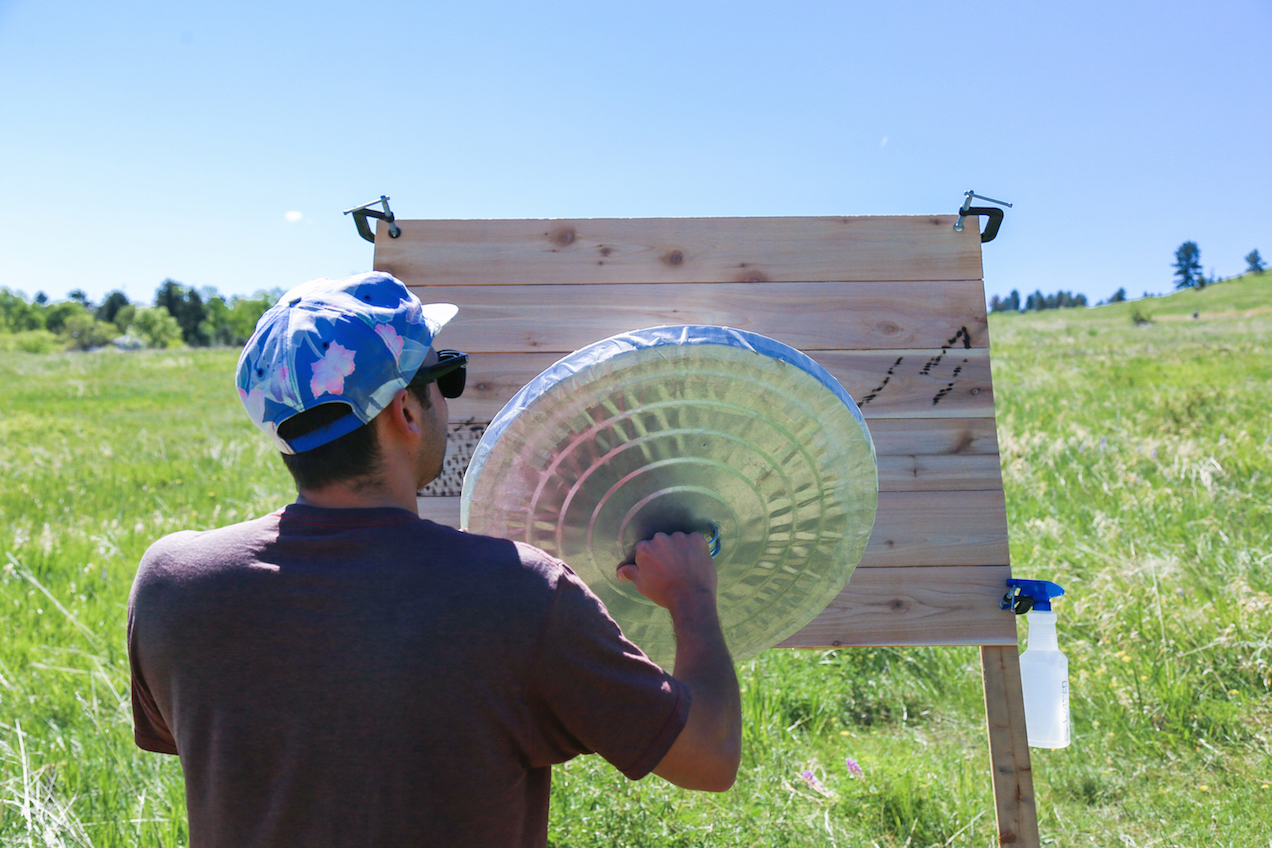
303: After standing and watching you for several hours, I’m thinking about how tiring this can be. How do you stay motivated?
MP: I used to paint and draw and do all that inside stuff. But I realized that because I have scoliosis, I was constantly in pain from bending over my work and drawing with one hand. Keeping your core strong and staying active is the best way to combat scoliosis and with this form of art, I’m outside and using my entire body all day, especially my core. It forces me to find a balance between being active and creating, something that being an indoor artist didn’t do for me. After these paintings, which can take anywhere from one to 30 hours, I feel like I ran a marathon, in the best way.
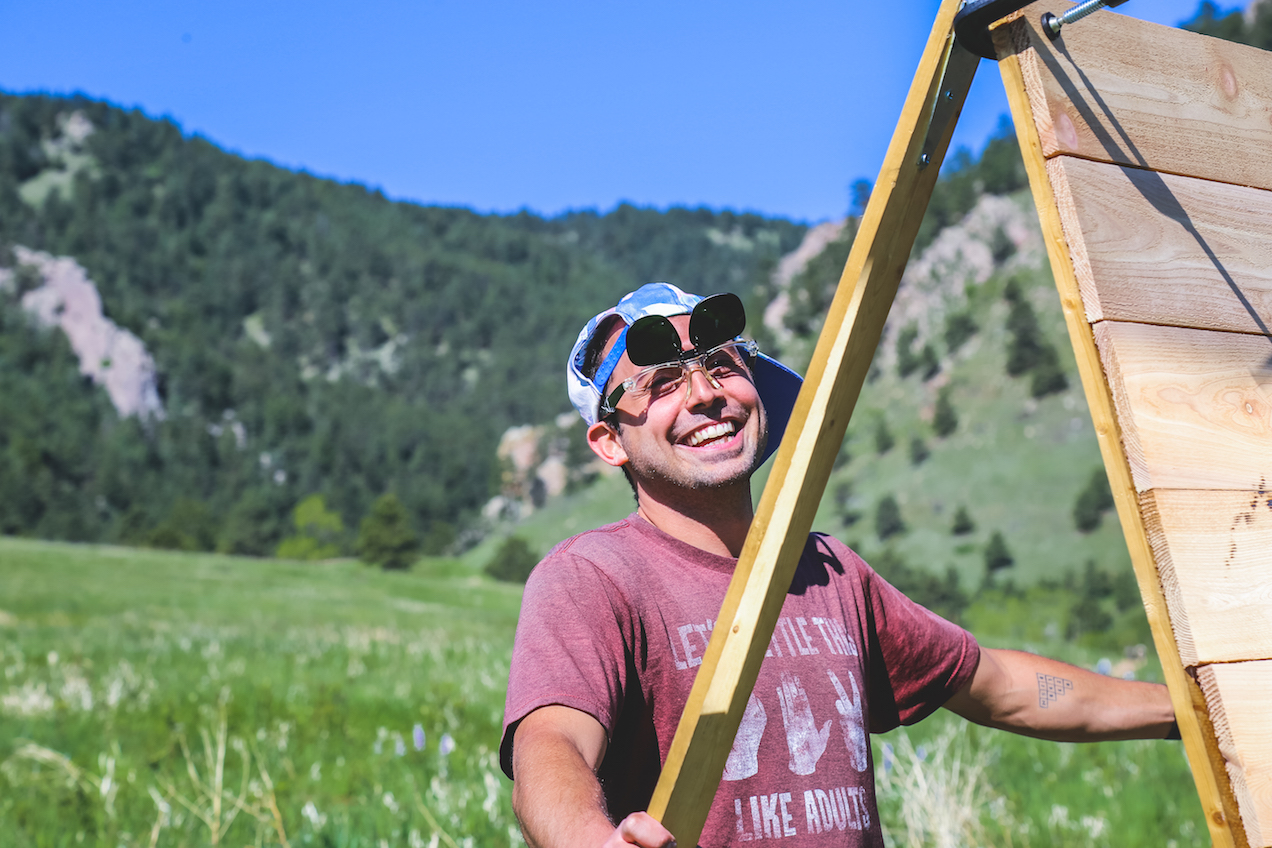
303: You call this art form heliography but many places online call it solar pyrography — what’s the difference?
MP: When I first discovered there were other people doing this form of art I also discovered that people always discover this on their own. Those who seek go online and discover there is already a name for it — solar pyrography. Over time I started not liking the term for it because it insinuates fire, “pyro,” and I’m trying to teach kids and it’s hard to tell parents that I want to teach their kids about fire and burning things. Heliography is more about exposure and it sounds safer, which is my main priority.
303: Why is safety one of your top priorities?
MP: Heliography is not for everybody because you have to sit in direct sunlight. I cover myself up, I’m always wearing glasses and I provide safety glasses because people should not look directly at the light. It’s a very powerful way to make art that can be very dangerous. To ensure that this is introduced to the public in the safest way is my number one goal. As far as the idea of teaching children at a young age the importance of being able to hold the power of the sun in your hand, it’s about understanding how something like that works. I envision a future where our memories when we talk about our first time holding the sun was not destructive — not killing ants or burning leaves but making art and community and learning responsibility.
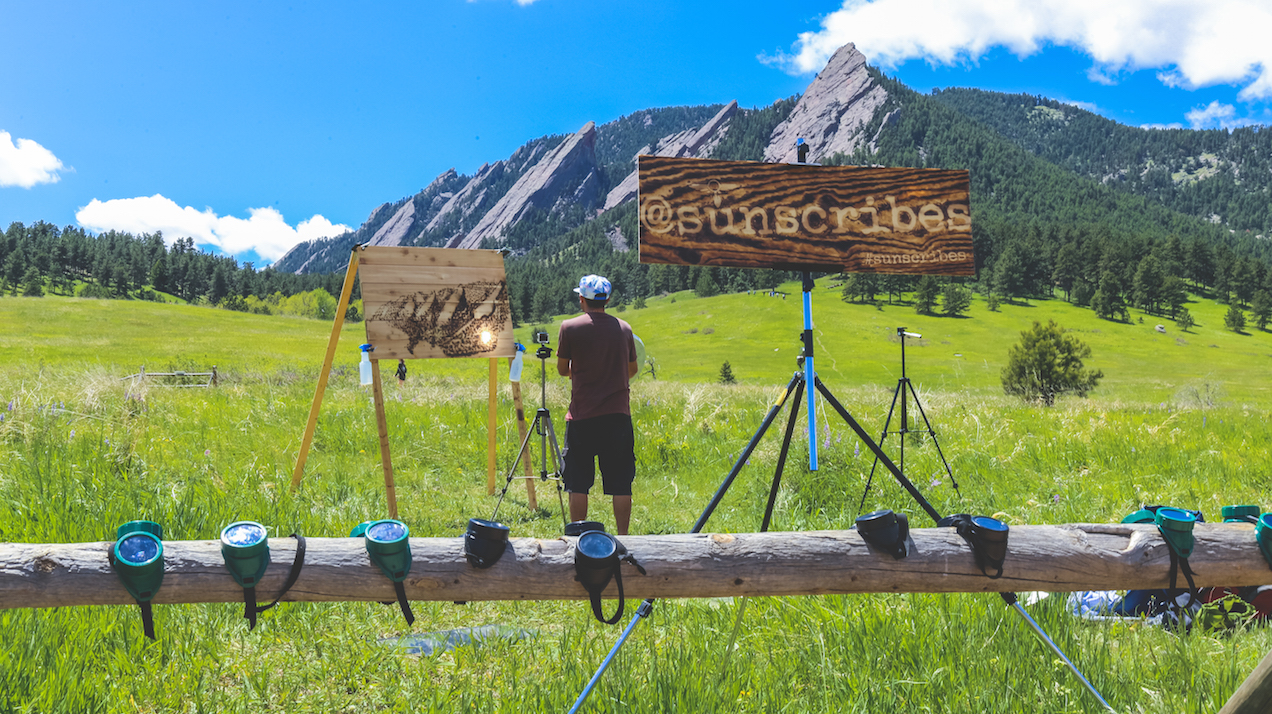
303: How easy is it to make a mistake?
MP: Well, you have to define mistake. It’s so easy to not pay attention to something and have whatever you were intending on doing start burning the opposite direction. A lot of it has to do with wind too, and where the flame is going. The beauty of this art form is perfection is thrown out the door because you are out the door, you’re outside and in the elements. This is about working with mother nature and accepting that you might be “in the groove” and all of a sudden a cloud rolls in and stays for three days. It forces you to accept mistakes and not see them as mistakes anymore.
303: You created a sign on your own for National Renewable Energy Lab (NREL) in Golden — what was your purpose in doing this?
MP: I believe [heliography] to be the future of sustainable advertising, period. That goes for any renewable energy company, anyone trying to promote anything sustainable or green should be promoting it in a green way. I’m trying to make the connection to people that this kind of art is completely sustainable. So when I guerrilla painted a sign for NREL directly in front of their property, I captured their attention in a positive way. We are currently in communication about future possibilities, especially since they started 40 years ago with solar thermal energy. I’m just using it in an artistic way rather than a technical way.
303: What is the one take-away that you hope people understand with your art?
MP: There is going to come a point, I think very soon, where the power might go out, or there may be something that we are going to have to look within and find a way to get through. Things are going to slow down. And I think heliography is one form of therapy for so many different types of ailments. In a society where things slow down, we are going to need to learn how to slow down with it and I think this could be something that can help with that transition. Learning patience and understanding and seeing that everything is revolving and so are we. I’ll always remember before my dad passed, he would say, “Slow down, man, just slow down.”

See the video Papadakis created for the Chautauqua session here.

